 W
WAbernathy Field Station is a 57-acre (230,000 m2) outdoor ecology classroom serving Washington & Jefferson College.
 W
WAllometric engineering is the process of experimentally shifting the scaling relationships, for body size or shape, in a population of organisms. More specifically, the process of experimentally breaking the tight covariance evident among component traits of a complex phenotype by altering the variance of one trait relative to another. Typically, body size is one of the two traits. The measurements of the two traits are plotted against each other and the scaling relationship can be represented as: . Manipulations of this sort alter the scaling relationships either by shifting the intercept (b), slope (m) or both to create novel variants. These novel variants can then be tested for differences in performance or fitness. Through careful testing, one could sequentially test each component of a trait suite to determine how each part contributes to the function of the entire complex phenotype, and ultimately the fitness of the organism. This technique allows for comparison within or among biological groups differing in size by adjusting morphology to match one another and comparing their performances.
 W
WAllometry is the study of the relationship of body size to shape, anatomy, physiology and finally behaviour, first outlined by Otto Snell in 1892, by D'Arcy Thompson in 1917 in On Growth and Form and by Julian Huxley in 1932.
 W
WArctic ecology is the scientific study of the relationships between biotic and abiotic factors in the arctic, the region north of the Arctic Circle. This region is characterized by stressful conditions as a result of extreme cold, low precipitation, a limited growing season and virtually no sunlight throughout the winter. The Arctic consists of taiga and tundra biomes, which also dominate very high elevations, even in the tropics. Sensitive ecosystems exist throughout the Arctic region, which are being impacted dramatically by global warming. The earliest inhabitants of the Arctic were the Neanderthal sub-species. Since then, many indigenous populations have inhabited the region, which continues to this day. Since the early 1900s, when Vilhjalmur Stefansson led the first major Canadian Arctic Expedition, the Arctic has been a valued area for ecological research. In 1946, The Arctic Research Laboratory was established in Point Barrow, Alaska under the contract of the Office of Naval Research. This launched an interest in exploring the Arctic examining animal cycles, permafrost and the interactions between indigenous peoples and the Arctic ecology. During the Cold War, the Arctic became a place where the United States, Canada, and the Soviet Union performed significant research that has been essential to the study of climate change in recent years. A major reason why research in the Arctic is essential for the study of climate change is because the effects of climate change will be felt more quickly and more drastically in higher latitudes of the world as above average temperatures are predicted for Northwest Canada and Alaska. From an anthropological point of view, researchers study the native Inuit peoples of Alaska as they have become extremely accustomed to adapting to ecological and climate variability.
 W
WA BioBlitz, also written without capitals as bioblitz, is an intense period of biological surveying in an attempt to record all the living species within a designated area. Groups of scientists, naturalists and volunteers conduct an intensive field study over a continuous time period. There is a public component to many BioBlitzes, with the goal of getting the public interested in biodiversity. To encourage more public participation, these BioBlitzes are often held in urban parks or nature reserves close to cities.
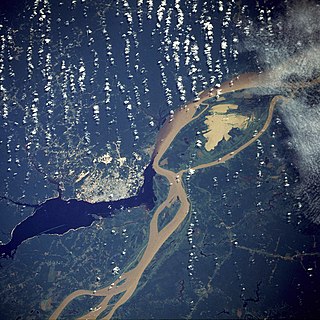 W
WThe Biological Dynamics of Forest Fragments Project is a large-scale ecological experiment looking at the effects of habitat fragmentation on tropical rainforest. The experiment which was established in 1979 is located near Manaus in the Brazilian Amazon rainforest. The project is jointly managed by the Amazon Biodiversity Center and the Brazilian Institute for Research in the Amazon (INPA).
 W
WBiosphere 2 is an American Earth system science research facility located in Oracle, Arizona. It was originally constructed between 1987 and 1991, and has been owned by the University of Arizona since 2011. Its mission is to serve as a center for research, outreach, teaching, and lifelong learning about Earth, its living systems, and its place in the universe. It is a 3.14-acre (1.27-hectare) structure originally built to be an artificial, materially closed ecological system, or vivarium. It remains the largest closed system ever created.
 W
WBreeding back is a form of artificial selection by the deliberate selective breeding of domestic animals, in an attempt to achieve an animal breed with a phenotype that resembles a wild type ancestor, usually one that has gone extinct. Breeding back is not to be confused with dedomestication.
 W
WThe Comoé National Park Research Station, located in the Comoé National Park, Côte d'Ivoire, was founded by Professor Karl Eduard Linsenmair in 1989/90.
 W
WDaisyworld, a computer simulation, is a hypothetical world orbiting a star whose radiant energy is slowly increasing or decreasing. It is meant to mimic important elements of the Earth-Sun system, and was introduced by James Lovelock and Andrew Watson in a paper published in 1983 to illustrate the plausibility of the Gaia hypothesis. In the original 1983 version, Daisyworld is seeded with two varieties of daisy as its only life forms: black daisies and white daisies. White petaled daisies reflect light, while black petaled daisies absorb light. The simulation tracks the two daisy populations and the surface temperature of Daisyworld as the sun's rays grow more powerful. The surface temperature of Daisyworld remains almost constant over a broad range of solar output.
 W
WThe EcoSphere and "Original Ecosphere" are trademark names for sealed blown-glass miniature aquaria produced by Ecosphere Associates, Inc., of Tucson, Arizona, United States. Spherical or ovoid, the aquaria range from roughly baseball-size to soccer-ball-size. They are sold worldwide as scientific novelties and decorative objects.
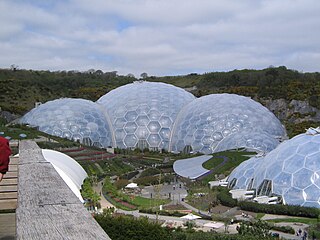 W
WThe Eden Project is a visitor attraction in Cornwall, England, UK. Inside the two biomes are plants that are collected from many diverse climates and environments. The project is located in a reclaimed china clay pit, located 2 km (1.2 mi) from the town of St Blazey and 5 km (3 mi) from the larger town of St Austell.
 W
WIISD Experimental Lakes Area is an internationally unique research station encompassing 58 formerly pristine freshwater lakes in Kenora District Ontario, Canada. Previously run by Fisheries and Oceans Canada, after being de-funded by the Canadian Federal Government, the facility is now managed and operated by the International Institute for Sustainable Development (IISD) and has a mandate to investigate the aquatic effects of a wide variety of stresses on lakes and their catchments. IISD-ELA uses the whole ecosystem approach and makes long-term, whole-lake investigations of freshwater focusing on eutrophication.
 W
WFree-Air Carbon dioxide Enrichment (FACE) is a method used by ecologists and plant biologists that raises the concentration of CO2 in a specified area and allows the response of plant growth to be measured. Experiments using FACE are required because most studies looking at the effect of elevated CO2 concentrations have been conducted in labs and where there are many missing factors including plant competition. Measuring the effect of elevated CO2 using FACE is a more natural way of estimating how plant growth will change in the future as the CO2 concentration rises in the atmosphere. FACE also allows the effect of elevated CO2 on plants that cannot be grown in small spaces to be measured. However, FACE experiments carry significantly higher costs relative to greenhouse experiments.
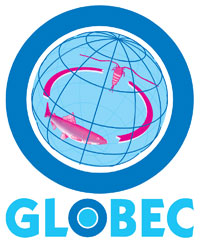 W
WGlobal Ocean Ecosystem Dynamics (GLOBEC) is the International Geosphere-Biosphere Programme (IGBP) core project responsible for understanding how global change will affect the abundance, diversity and productivity of marine populations. The programme was initiated by SCOR and the IOC of UNESCO in 1991, to understand how global change will affect the abundance, diversity and productivity of marine populations comprising a major component of oceanic ecosystems.
 W
WThe Godwin Plots are one of the world's longest running science experiments. They can be found at Wicken Fen nature reserve, Cambridgeshire, England.
 W
WHubbard Brook Experimental Forest is an area of land in the towns of Woodstock and Thornton in the White Mountains of New Hampshire that functions as an outdoor laboratory for ecological studies. It was initially established in 1955 by the United States Forest Service for the study of the relationship between forest cover and water quality and supply.
 W
WThe Jasper Ridge Biological Preserve is a 483 hectares nature preserve and biological field station formally established as a reserve in 1973. The biological preserve is owned by Stanford University, and is located at 37.408°N 122.2275°W south of Sand Hill Road and west of Interstate 280 in Portola Valley, San Mateo County, California. It is used by students, researchers, and docents to conduct biology research, and teach the community about the importance of that research. The preserve encompasses Jasper Ridge and Searsville Lake and the upper reaches of San Francisquito Creek, along with the latter's Corte Madera Creek and Bear Creek tributaries.
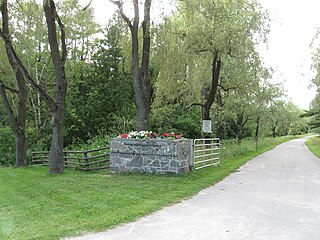 W
WThe Koffler Scientific Reserve at Jokers Hill, is a biological field station belonging to and managed by the University of Toronto. It occupies roughly 348 hectares of old fields, wetlands, grasslands, and forest lands in King Township, on the western portion of the Oak Ridges Moraine and close to the town of Newmarket, Ontario. The site's ecosystems are home to many species of plants and animals.
 W
WLake Pohjalampi is a lake in eastern Finland. The lake has a surface area of 61 hectares, and the mean and maximum depth are 3.2 meters and 5.3 meters, respectively.
 W
Ws
 W
WThe Canada lynx is a medium-sized North American wildcat that ranges across Alaska, Canada and many of the contiguous United States. It is characterized by its long, dense fur, triangular ears with black tufts at the tips, and broad, snowshoe-like paws. As in the bobcat, the lynx's hindlimbs are longer than the forelimbs, so the back slopes downward to the front. The Canada lynx stands 48–56 cm (19–22 in) tall at the shoulder and weighs between 5 and 17 kg. The lynx is a good swimmer and an agile climber. The Canada lynx was first described by Robert Kerr in 1792. Three subspecies have been proposed, but their validity is doubted.
 W
WThe Oostvaardersplassen is a nature reserve in the Netherlands, which is managed by the State Forestry Service. Covering about 56 square kilometres (22 sq mi), it is noted as an experiment of rewilding. It is in a polder which was created in 1968; by 1989, its ecological interest had resulted in its being declared a Ramsar wetland. It became part of Nieuw Land National Park when it was created in 2018.
 W
WParagon Space Development Corporation is an American company headquartered in Tucson, Arizona. Paragon is a provider of environmental controls for extreme and hazardous environments. They design, build, test and operate life-support systems and leading thermal-control products for astronauts, contaminated water divers, and other extreme environment explorers, as well as for unmanned space and terrestrial applications.
 W
WPleistocene Park is a nature reserve on the Kolyma River south of Chersky in the Sakha Republic, Russia, in northeastern Siberia, where an attempt is being made to re-create the northern subarctic steppe grassland ecosystem that flourished in the area during the last glacial period.
 W
WJane Poynter is an American aerospace executive, author, speaker and the co-founder and former CEO of World View Enterprises, a private near-space exploration and technology company headquartered in Tucson, Arizona. Poynter was also a founding member of the Biosphere 2 design team and a crew member from the original two-year mission inside the materially closed ecological system.
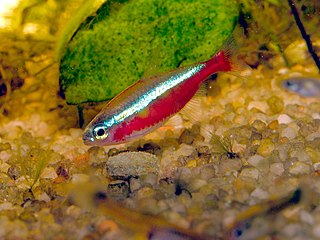 W
WProject Piaba is a fishery initiative located on the Rio Negro tributary of the Amazon river. The program both promotes and researches sustainable aquarium pet fish collection and its impact on the environment. The name of the project comes from the Brazilian Portuguese word, piaba, which means "little fish", referring specifically to the cardinal tetra. Project Piaba is an ongoing project with annual research expeditions to the Rio Negro region. Because of the sustainable nature of the project, its slogan is "Buy a Fish, Save a Tree!"
 W
WThe San Joaquin Experimental Range is an ecosystem research experimental area in the foothills of the Sierra Nevada. The range is located in O'Neals, California, outside of the Sierra National Forest about 32 kilometres (20 mi) north of Fresno, California.
 W
WThe Tauros Programme, formerly known as TaurOs Project, is a cooperation between the Dutch foundation Stichting Taurus and universities such as the Wageningen University and Research Centre. It is an international effort to breed a type of cattle that resembles the extinct aurochs, the wild ancestor of domestic cattle, to a large extent.
 W
WWild Field is a 300 ha nature reserve near the city of Tula in Tula Oblast in the European part of Russia, approximately 250 km (150 mi) south of Moscow. It was established in 2012 by Russian scientists Sergey Zimov and Nikita Zimov as a companion to Pleistocene Park in Siberia.
 W
WThe single predator-single prey relationship between wolves and moose on Isle Royale in Lake Superior is unique, and has been the subject of detailed study for over 50 years. Isle Royale, the principal island of Isle Royale National Park in Michigan in the United States, is an isolated island with little migration of animals into and out of the island, and as a national park, human interaction and impact on the two species is also limited. Both the wolves and the moose first became established populations on Isle Royale in the 1900s. Over the fifty years of the study, the populations of both moose and wolves have shown repeated spikes and declines and have not settled to a balanced relationship. The moose populations have ranged from 500 to 2500 while the number of wolves has ranged from almost 50 to down to two. As of 2018, wolves are being released at Isle Royale in hopes of bringing back the wolf population.